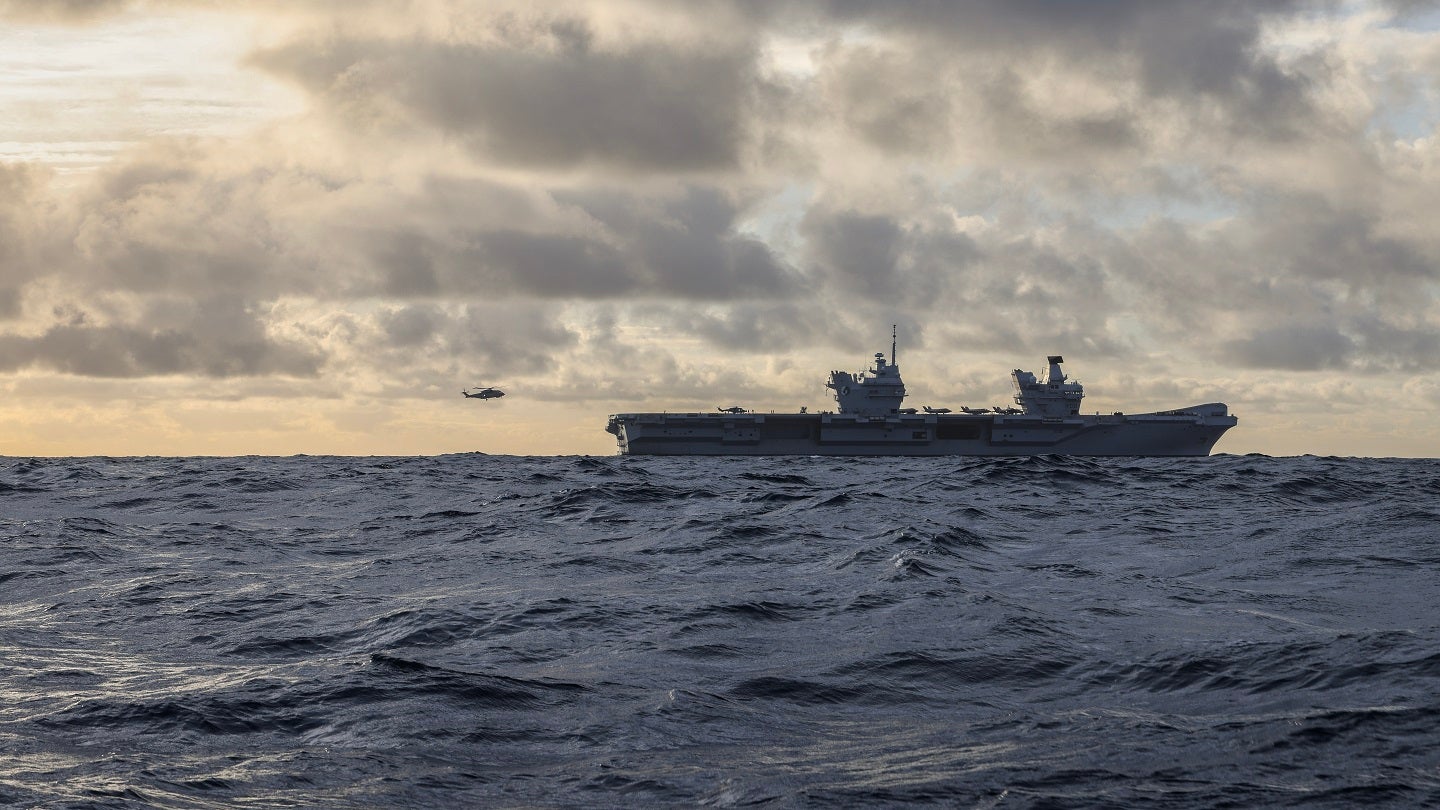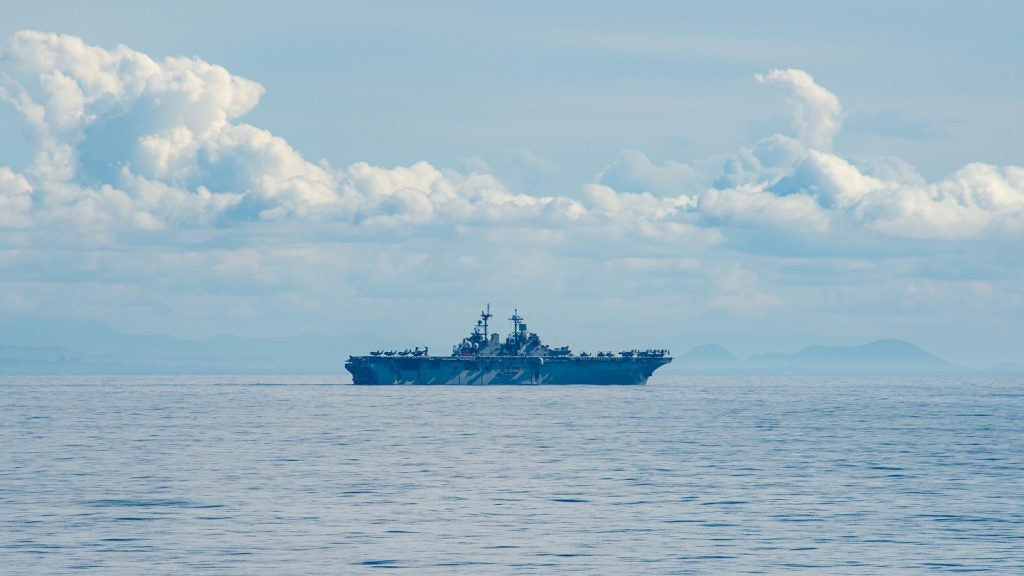
The recent departure of the USS Gerald R Ford and its carrier strike group from the Mediterranean region, deployed following the outbreak of hostilities between Israel and Hamas in October last year, has left a carrier-shaped-capability-hole amid rising instability in the Red Sea.
Notable by their absence are either of the Royal Navy’s Queen Elizabeth-class aircraft carriers, with the UK instead committing to the deployment an amphibious ready group into the Indian Ocean at some point in 2024, followed by the return of a Queen Elizabeth-class carrier as part of a transit through to the Asia-Pacific region in 2025.
This appears a far cry from the reasoning given by then First Sea Lord, Admiral Sir Alan West, in evidence to the UK defence committee in 2004 when outlining the reasoning for the UK to pursue the return of full fleet carrier to its force structure. In the oft-cited evidence, West states the then US Chief of Naval Operations supported the UK’s decision to replace the Invincible-class light carriers with the 65,000 tonne Queen Elizabeth class as he foresaw the UK “slotting into” the deployments of the US Navy’s own flattops.
Some 20 years later and an opportunity to do just that appears to have slipped the UK’s grasp.
There are likely a range of reasons for the UK to not send a carrier out to the Mediterranean or Middle East, including availability (one of the two Queen Elizabeth carriers, HMS Prince of Wales, has only recently emerged from drydock after undergoing emergency repairs), deployment cost, and crewing challenges as the UK Armed Forces contest with a severe reduction in new recruits replacing those leaving the service.
Availability of naval air assets, such as the F-35B stealth fighters and Mk2 and Mk4 Merlin helicopters, is another factor to consider for any UK carrier deployment.
How well do you really know your competitors?
Access the most comprehensive Company Profiles on the market, powered by GlobalData. Save hours of research. Gain competitive edge.

Thank you!
Your download email will arrive shortly
Not ready to buy yet? Download a free sample
We are confident about the unique quality of our Company Profiles. However, we want you to make the most beneficial decision for your business, so we offer a free sample that you can download by submitting the below form
By GlobalDataTyphoon gets the nod over the Lightning
On the night of 11 January 2024, the UK opted to join US air and naval strikes against Houthi forces in Yemen, targeting missile and drone launch sites in a bid to bring a halt to months of attacks against commercial shipping transiting the Red Sea.
While the US was able to call upon air assets embarked on the aircraft carrier USS Dwight D Eisenhower, along with land attack missile capability from Arleigh Burke-class guided-missile destroyers, the UK had to rely on four RAF Typhoons based at RAF Akrotiri, which is around 2,500km north of the Yemeni capital of Sana’a.
The RAF Typhoons, which according to the UK Government successfully prosecuted attacks on Houthi targets using Paveway IV guided munitions, had to call on an RAF Voyager air-to-air refuelling tanker in order to complete the round trip.
In October last year the UK successfully released Paveway IV guided munitions from F-35B Lightning II fighters during live-fire exercises in Sweden, the latest milestone in several years of integration testing designed to improve the stealth fighter’s overall weapons package.
According to UK Parliament figures, by May 2023 the UK had received 31 of the planned 48 F-35B fighters, which is the standard embarked fixed-wing aircraft onboard the Queen Elizabeth-class carriers.
It is thought that no UK F-35B fighters are forward based in regions such as the Middle East with the fleet being UK-based, apart from an operational test and conversion unit in the United States.
What is the Queen Elizabeth class for?
The first full deployment with a Royal Navy Queen Elizabeth-class carrier took place in 2021 under the Carrier Strike Group 21 (CSG21) mission and saw the return of the UK to full fleet carrier operations for the first time since the retirement of Audacious-class flattops in 1970s. The intervening Invincible-class light carriers were designed from the outset as anti-submarine warfare platforms with some air support capability, rather than full fixed-wing, air domain control.
The UK’s naval juggling act to sustain capability and ensure missions readiness amid a personnel crunch, has raised questions from about the Government’s near-term vision for the Royal Navy amid consideration that some vessels might be axed ahead of schedule and crucial capabilities ‘gapped’.
Chief among this is the possibility that the Albion-class landing platform docks (LPD) – a key element of the UK’s ability to conduct amphibious operations – could be decommissioned several years ahead of their expected 2034 out-of-service date. HMS Albion has just entered a six-year extended readiness period from which it could well never return.
The loss of the two Albion class LDPs would have a significant impact on the Royal Navy’s full spectrum capability, while the MRSS replacement ships are still at the very earliest stage of consideration. An interim capability of Bay class auxiliaries, aided by a Queen Elizabeth class acting as a helicopter carrier when available, could not replicate the functions of the Albion class should they depart.

Should the solution, instead of the Royal Navy producing and operating the two Queen Elizabeth class carriers, sustaining the Albion class LPDs, capability gapping the role that the helicopter carrier HMS Ocean (since sold to Brazil) performed, and committing to the possible development as the MRSS with the Netherlands, instead to have put all its naval eggs into an amphibious assault basket?
Specifically, should the Royal Navy be operating a clutch of UK variants of the US Wasp or Batch 2 America class instead? Could the Royal Navy, prior to the build of the huge flattops, have combined these numerous capabilities into a single platform, one already operated by the US Navy?



